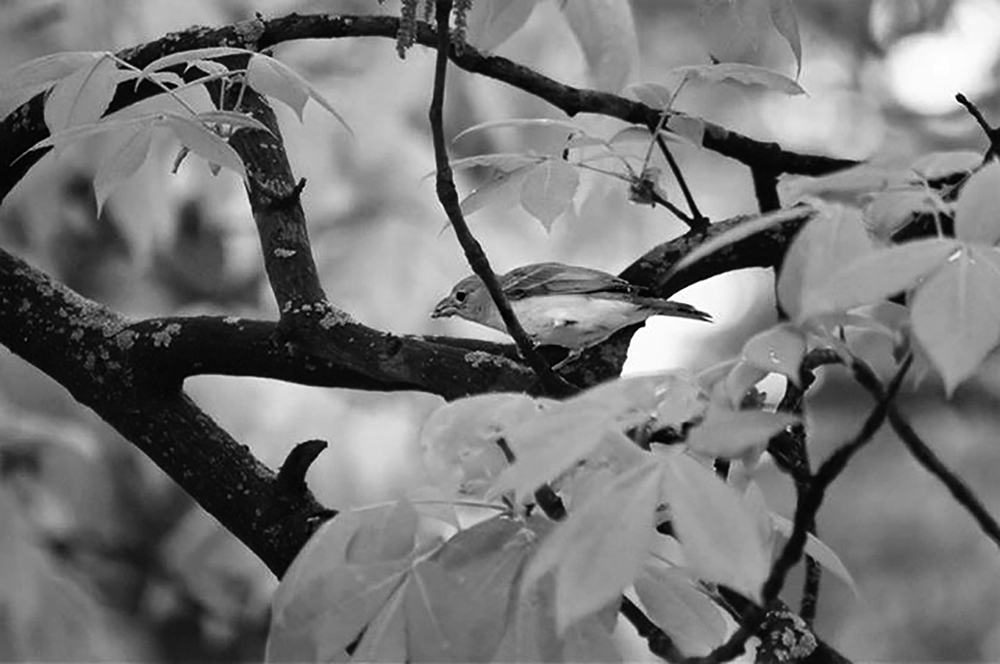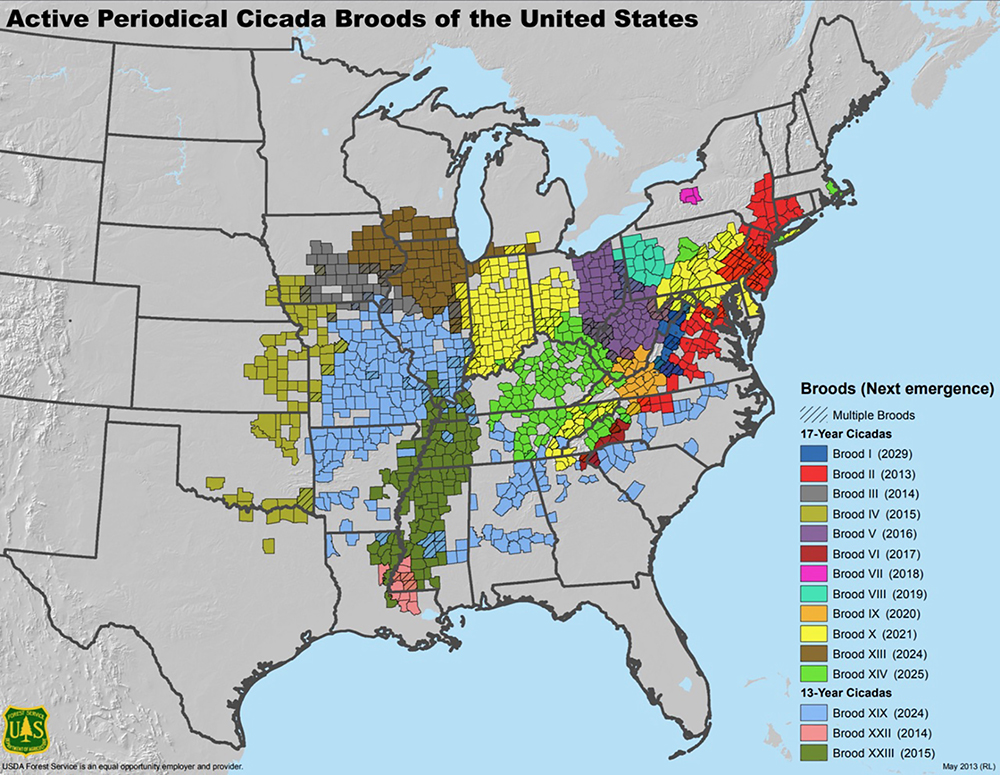
MIKE MILLER
Each spring, I notice an increase in paper wasp activity near the Tawny Oaks Visitor Center. That building, with its overhanging roof line, seems to be a great place for wasps to start their paper nests. Apparently, I’m not the only thing observing this. Around the beginning of May, the visitor center is visited by a pair of Summer Tanagers. They usually set up housekeeping in a hickory tree that grows near the building.

Female Summer Tanager at Tawny Oaks. (PHOTO BY MIKE INGRAM)
They are here because they have a hankering for the wasps that are attracted to the building. Summer Tanagers are bee and wasp specialists. They have figured out how to handle these insects that have an ability to defend themselves. I have watched them fly out from a branch a short distance and catch a wasp in mid-air with their stout beak. They then fly back to the branch and smack the wasp, headfirst against it. They then wipe the backside of the wasp against the branch to remove the stinger. Wasps have enough of a defense system that most birds will avoid them. The Summer Tanager tends to have this part of the insect menu to itself. I have never seen the Tanagers eat all of the wasps around the visitor center. They seem to always leave a few nests. It is almost like they farm the food source. There’s a subtle wisdom in that bird.
The male Summer Tanager is a red bird with a whitish bill, while the female is an olive-yellow color. They like to nest in the fork of branches of hickory trees. They especially like very open woodlands that haven’t been overgrown with brush and shrubs, so the grounds around Tawny Oaks are perfect for them. You can hear their call note “picky-tuck-tuck” all summer long.
Cicada Confusion
I have had several inquiries if cicadas will be emerging here in the Peoria region this year. There have been several newspaper articles and new stories how this year will be a huge emergence of 17-year cicadas. Such is the problem of “local” news outlets running news stories from far afield. If you are thinking, “Gee, it doesn’t seem like it was that long ago since they emerged last time,” you are correct.
This is the year for the Brood X emergence, which covers most of Indiana, but only will be experienced in 3 far-eastern counties of Illinois. Here in our part of the state we are home to Brood XIII which will not emerge until 2024. So, you will have to wait a few years before you will experience the greatest emergence of insects on the planet close to home. If you can’t wait that long, head on over to Indiana this June to enjoy the spectacle.
For more info on Cicadas, you can look back at a past Nature Rambles about these fascinating insects:
http://thecommunityword.com/online/blog/2020/06/24/nature-rambles-early-cicadas/.


Recent Comments